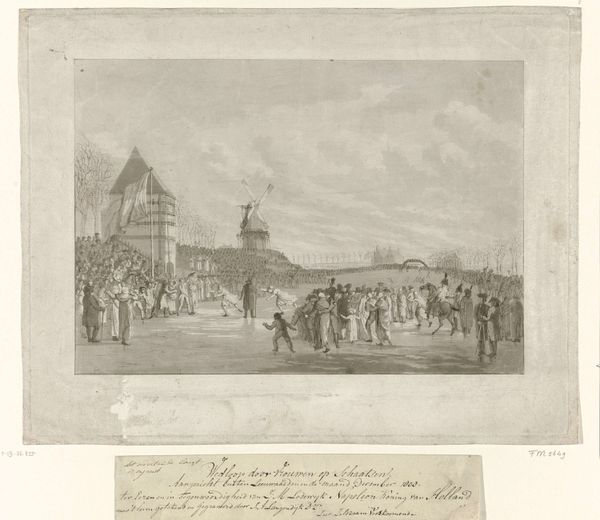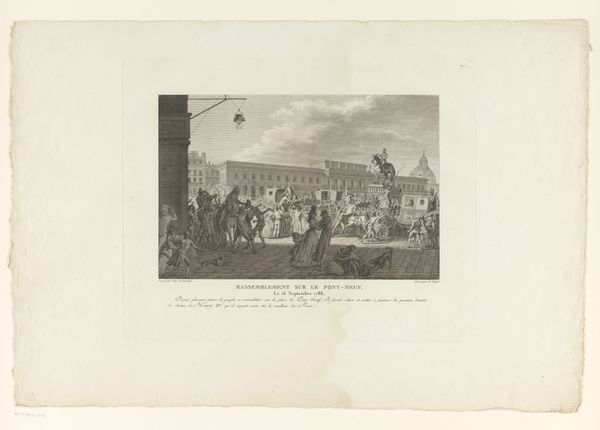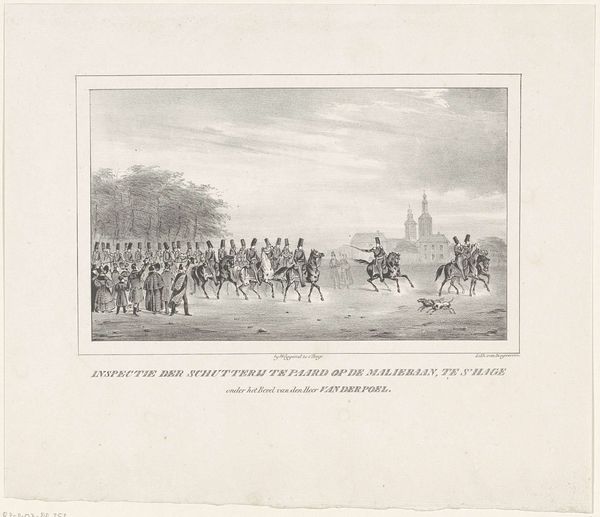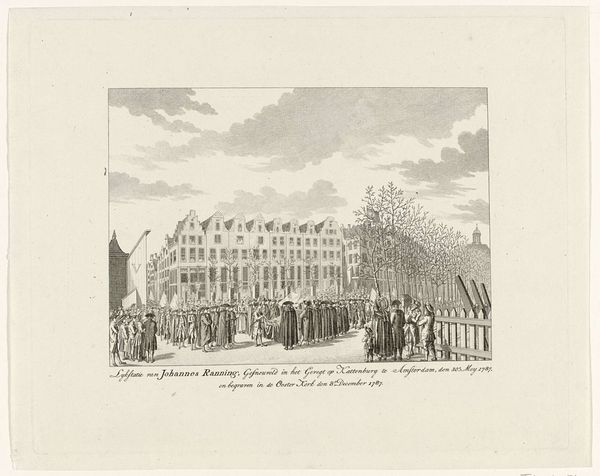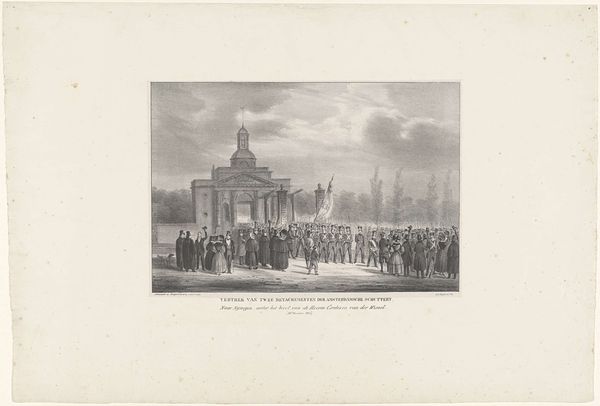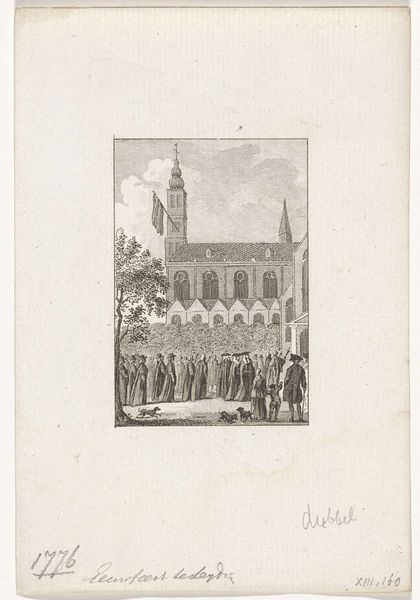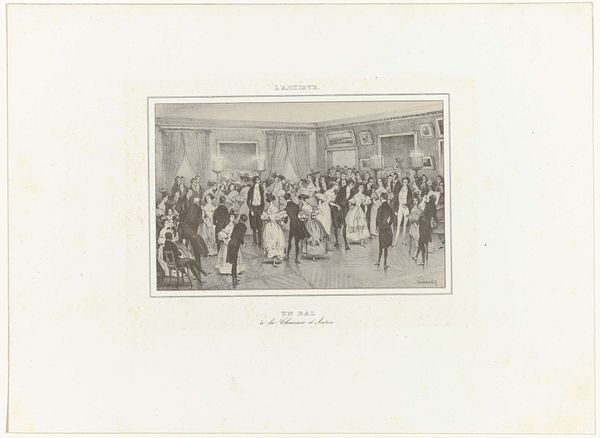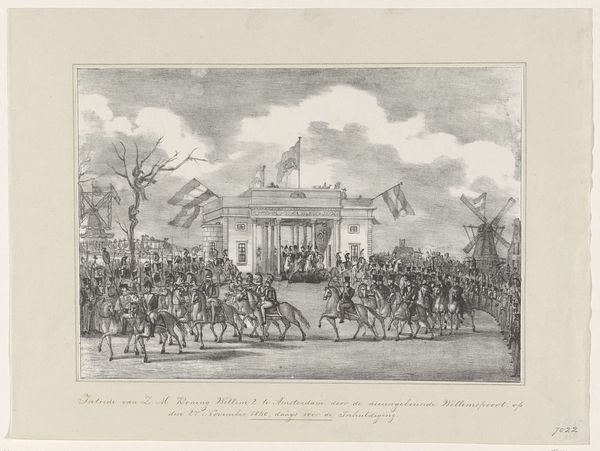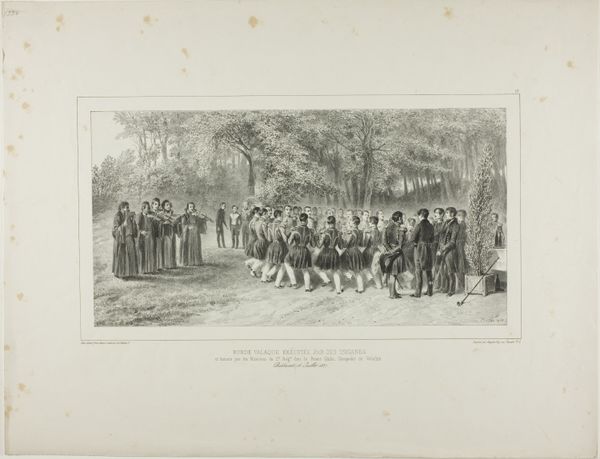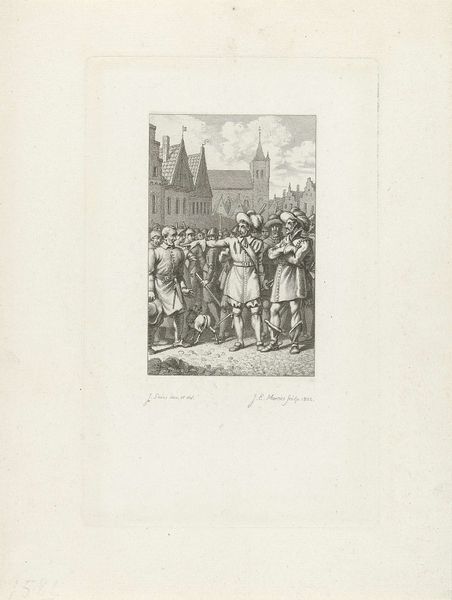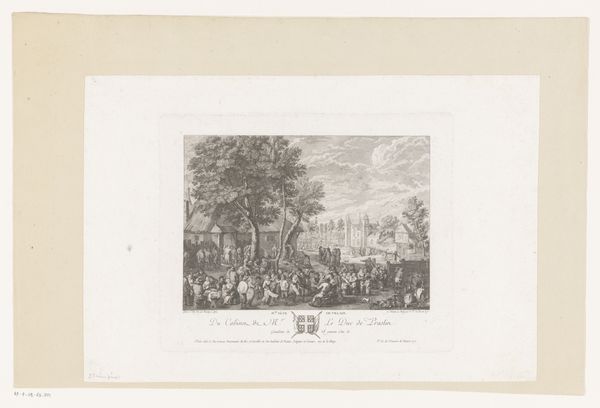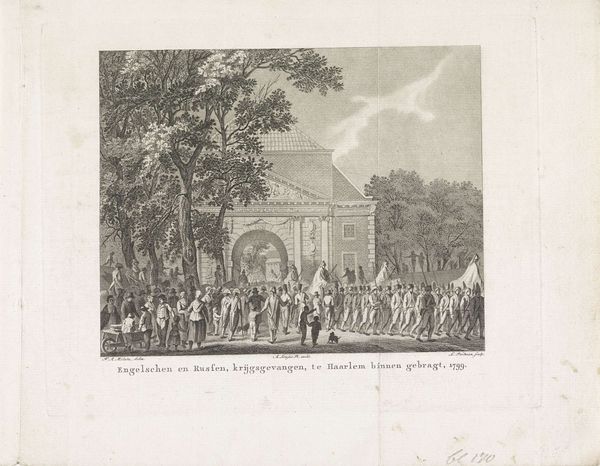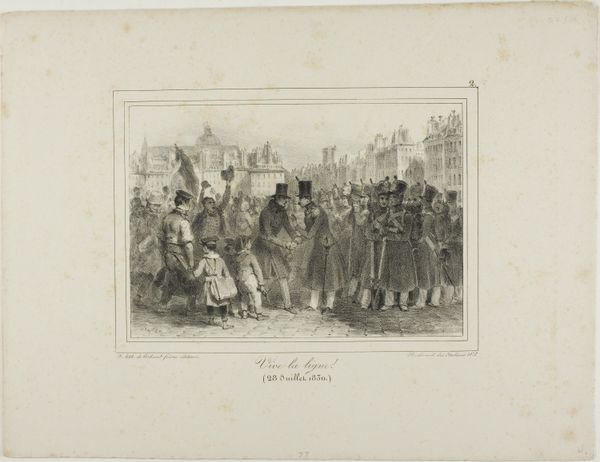
print, engraving
# print
#
old engraving style
#
romanticism
#
cityscape
#
history-painting
#
engraving
#
realism
Dimensions: height 250 mm, width 295 mm
Copyright: Rijks Museum: Open Domain
Editor: So this is *Inspectie van de Haagsche Schutterij, 1830*, made between 1830 and 1831 by Desguerrois & Co. It's an engraving. The level of detail achieved just with lines is amazing. It’s a busy scene, lots of figures, but it feels balanced. How would you interpret this work through a formal lens? Curator: Formally, one might observe how the engraver establishes a clear recession of space through variations in line weight and density. Note the architecture – the way the lines converge towards a vanishing point. This creates depth, yet it's all achieved through strictly controlled gradations of tone. Observe how the massing of the crowd is balanced by the formal architecture. Editor: That’s interesting. It’s almost like a stage, how they're positioned. The architecture almost looks like a proscenium. What’s the impact of using print, of lines? Curator: The reliance on line introduces a graphic quality, which elevates the design over purely representational concerns. The hatching, the cross-hatching, becomes an element of pure form. What is achieved through contrast with such basic materials. It encourages careful viewing. Are the light/dark juxtapositions purely to show forms, or do you believe the values evoke any emotive sense of depth to you? Editor: Hmm. The light seems fairly neutral... not necessarily casting an emotion... or, well, maybe stability and clarity are being emphasized. So by carefully analyzing these formal choices, the composition and the lines, we get a much richer understanding. Thank you! Curator: Precisely. The work functions primarily by the relationship of line, mass, and space within the picture plane. An enriching study!
Comments
No comments
Be the first to comment and join the conversation on the ultimate creative platform.
